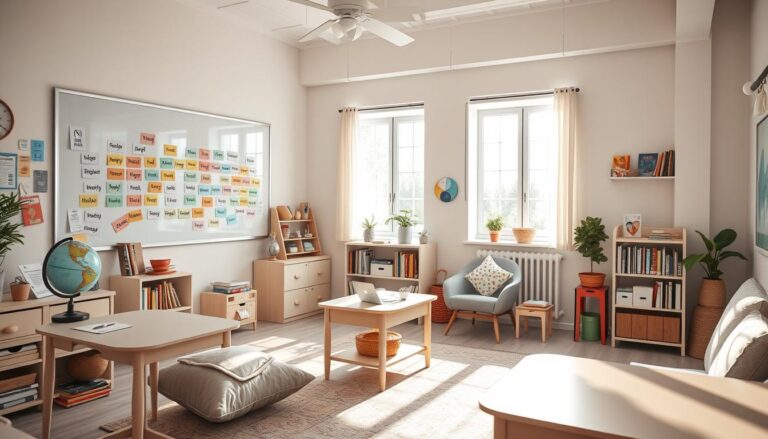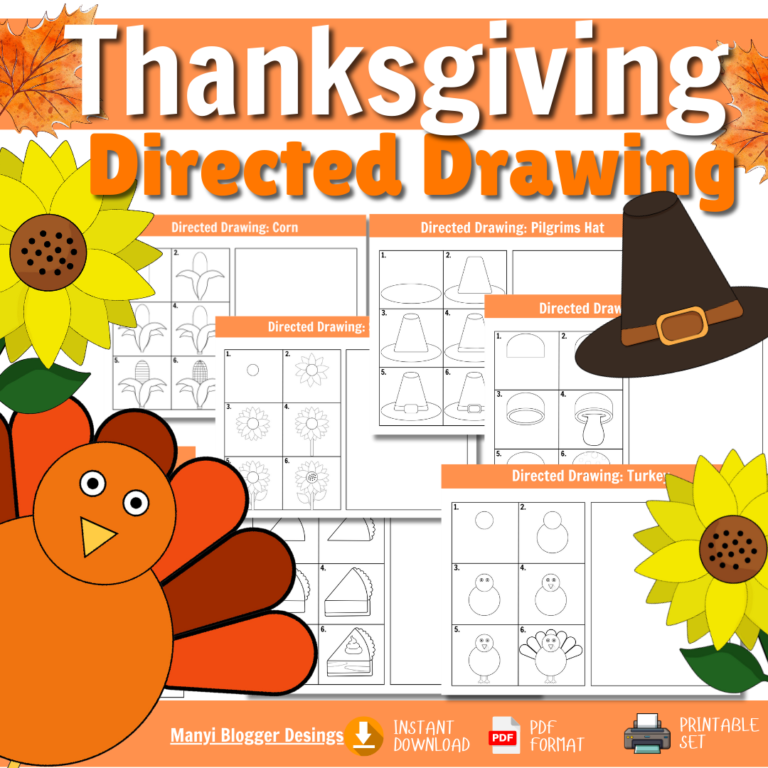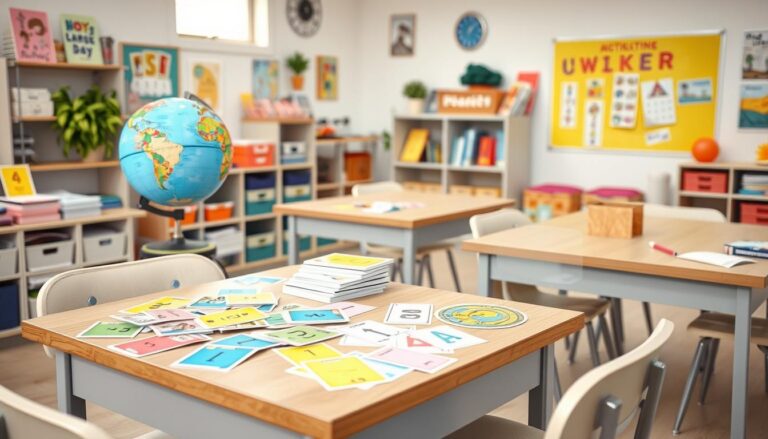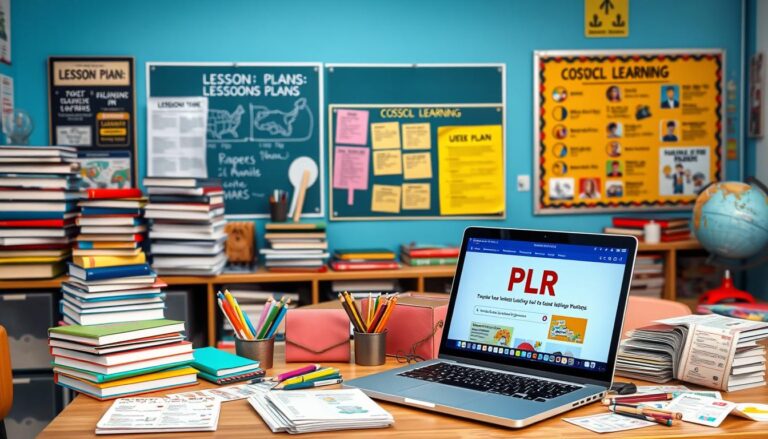
The debate between online teaching and traditional classroom instruction is growing. I’m excited to explore the pros and cons of each. This will help you find what works best for you.
Virtual classrooms have changed education a lot. Online teaching lets students learn from home, anytime. But, traditional classrooms offer face-to-face learning and a sense of community.
In this article, we’ll look at the differences between online and traditional teaching. We’ll also see how new technology is changing learning. Whether you’re a student, teacher, or just learning, you’ll understand education better.
Disclosure: Some of the links in this post are affiliate links, which means that if you make a purchase through them, I may earn a small commission at no additional cost to you. I only recommend products that I believe will genuinely help you in your journey to earn money from home. These commissions allow me to keep creating helpful content and sharing practical advice, so thank you for supporting my blog!
Embracing the Digital Age: Online Teaching Redefined
The digital revolution has changed education a lot. Now, online teaching is more common. Students can learn from home in virtual classrooms. This change has brought a new era to education. As virtual learning grows, digital tools like the Logitech C920 Webcam can improve video quality for online classes, while platforms like Zoom and Google Classroom provide engaging environments for students.
The Rise of Virtual Classrooms
Virtual classrooms are a new way to learn, different from old-school classrooms. They use cool tech to make learning fun. Students can talk to teachers and friends online, using tools like video chats and whiteboards.
This new way of learning lets students get a more personal education. It’s all about making learning fit each student’s needs.
Synchronous and Asynchronous Learning Modes
Online teaching offers different ways to learn. Synchronous learning means learning together in real time. It’s great for getting help right away and working together.
Asynchronous learning lets students learn at their own speed. They can do things whenever they want. This is good for those who like to learn on their own.
Using both ways of learning makes online education better. It meets the needs of all kinds of learners. This way, everyone can find a learning style that works for them.
Traditional Classroom Teaching: A Time-Honored Approach
The digital age has changed education, but the traditional classroom is timeless. This old method of classroom teaching has stood the test of time. It offers a unique learning experience that keeps students engaged.
At the core of traditional learning is the bond between teachers and students. In a classroom, teachers can build strong relationships and offer personalized help. This setting also creates a sense of community that’s hard to find online. Learning by hand and through activities can make students understand and remember more.
Classrooms also offer a structured schedule and routine, which helps students who like order. The social side of learning, like group talks and projects, helps students develop important skills. These skills are key for personal growth.
Even with the digital shift, classroom teaching remains vital. It meets the different learning needs of students. As we look to the future, we must value the role of traditional classrooms in making students well-rounded and successful.
Online Teaching vs Classroom Teaching: Pros and Cons Uncovered
The debate between online teaching and traditional classroom instruction is ongoing. It’s important to know the advantages and challenges of each. From the flexibility of online learning to the interactive classroom, understanding these differences helps us decide the future of education.
Flexibility and Convenience: The Online Edge
Online teaching offers a lot of flexibility. Students can learn at their own pace and schedule. This is great for those with busy lives or living far away. Plus, online learning saves time on commuting and lets you study from home.
Fostering Student Engagement: Classroom vs. Online
While online teaching is flexible, classrooms offer a more engaging experience. Face-to-face interactions and group activities build stronger connections. These activities are often easier to do in a classroom, which can improve student engagement.
| Factors | Online Teaching | Classroom Teaching |
|---|---|---|
| Flexibility | High | Low |
| Convenience | High | Moderate |
| Student Engagement | Moderate | High |
The choice between online teaching and classroom instruction depends on individual needs. Knowing the strengths and weaknesses of each helps us create a better educational environment. This environment meets the diverse needs of today’s learners.
Blending the Best of Both Worlds: Hybrid Learning Models
In the world of education, a new approach is gaining popularity. It combines online learning with traditional classroom teaching. This mix, known as hybrid learning, gives students a rich and engaging learning experience.
Hybrid learning uses the strengths of both online and in-person teaching. It creates a flexible learning space that meets different learning styles. Students get a personalized learning path that suits them best.
Hybrid learning recognizes that every student is unique. It blends online resources, virtual sessions, and face-to-face interactions. This mix enriches the learning experience and prepares students for the future.
Teachers use blended learning to create engaging lessons. They use technology to enhance learning while keeping the value of in-person interactions. This approach helps students learn, collaborate, and get support from teachers in a flexible way.
As we move into the digital age, hybrid learning models are becoming key. They combine the best of online and classroom teaching. This prepares students for the challenges and opportunities of today’s world.
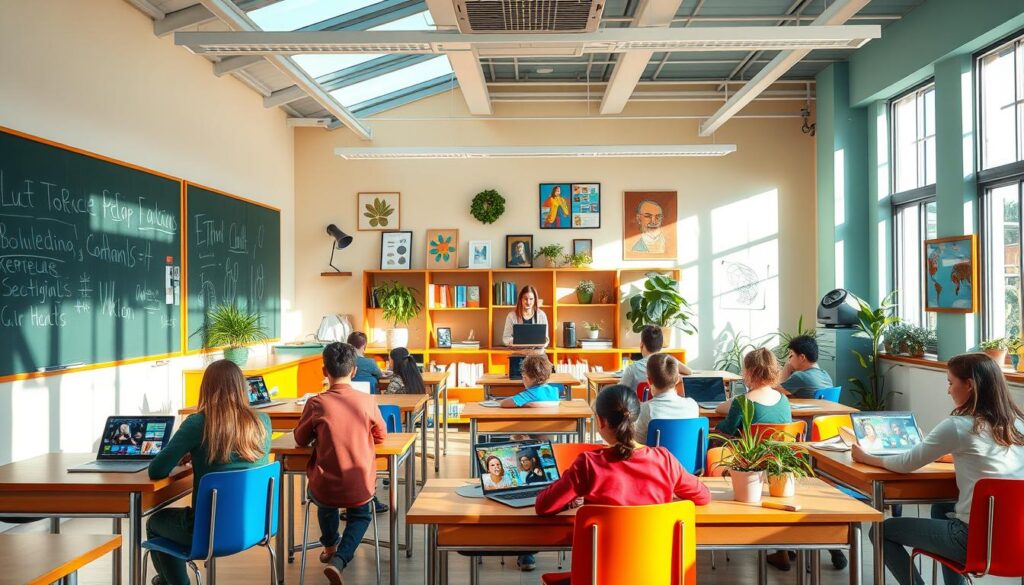
| Characteristics of Hybrid Learning Models | Benefits of Hybrid Learning |
|---|---|
|
|
Educational Technology Tools: Enhancing Online Instruction
The digital age has changed online teaching a lot. New tools have made learning online better. These tools include learning management systems, interactive whiteboards, and places for students to work together.
Learning Management Systems (LMS)
Learning management systems (LMS) are key for online teaching. They help teachers manage courses and keep students involved. Systems like Canvas, Blackboard, and Moodle have many features. They help with assignments, grading, and even virtual meetings.
Interactive Whiteboards and Collaboration Tools
Interactive whiteboards and collaboration tools are important for online learning. They let teachers and students interact in real time. Tools like Zoom’s Whiteboard and Google Jamboard make lessons more engaging. Platforms like Google Docs and Microsoft Teams help students work together.
Using these educational technology tools makes online learning better. They help teachers reach different students and create a sense of community. This makes the virtual classroom just as good as a real one.
Student Perspectives: Navigating Online and Classroom Experiences
I’ve always been interested in how teaching and learning change. To understand the debate between online and classroom learning, I talked to students who’ve tried both. They shared their thoughts on what works best for them.
Students have different views on learning. Some like online classes because they can learn at their own pace. Others prefer classrooms for the chance to interact and do hands-on activities.
| Online Learning Experiences | Classroom Learning Experiences |
|---|---|
|
|
Sarah talked about balancing online and classroom courses. She liked the ease of virtual classes but missed the classroom vibe. Michael preferred classrooms for the face-to-face talks and quick feedback.
The views of students show that learning is complex. Some do well online, while others prefer classrooms. It’s important to understand these differences to improve education for everyone.
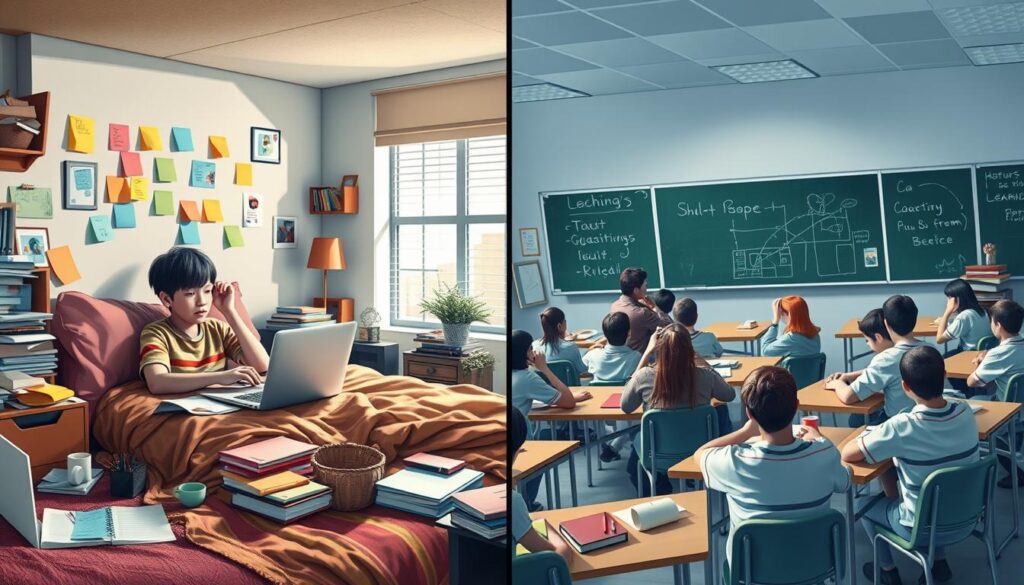
Empowering Teachers: Training for Effective Online Pedagogy
As education moves online, teachers need new skills. They must learn to excel in online pedagogy. This includes mastering virtual classroom management and creating engaging multimedia content.
With the right training, teachers can make learning fun and interactive. They can create experiences that engage students deeply.
Mastering Virtual Classroom Management
Teaching online is different. Teachers must handle new challenges. They need to:
- Keep students involved with fun activities and discussions
- Communicate well with students who are far away
- Use technology to help students work together
- Stop cheating and keep learning fair
Developing Engaging Multimedia Content
Good multimedia content is key in online learning. Teachers should learn to:
- Make presentations that grab students’ attention
- Use videos, animations, and simulations to help students learn
- Find and share the latest digital resources
- Use tools to get students involved in class
By focusing on teacher training for online pedagogy, schools can help teachers succeed. This way, students get a better learning experience.
Conclusion: Embracing the Future of Education
As we wrap up our look at online and classroom teaching, it’s clear that the future will mix both. Online learning has changed how we study, but classrooms offer something special. They give us face-to-face time and hands-on learning.
It’s important to use the best of both worlds. This way, we can create a learning space that’s both fun and full of knowledge. Teachers and schools need to keep up with new tech and teaching methods.
This will help make learning better for everyone. By combining online ease with classroom excitement, students can do great things. They’ll learn, think critically, and make real connections.
Looking ahead, we must be open to new ideas in education. We should make sure every student gets the help they need to succeed. By finding the right mix of online and classroom learning, we can prepare the next generation for anything.


